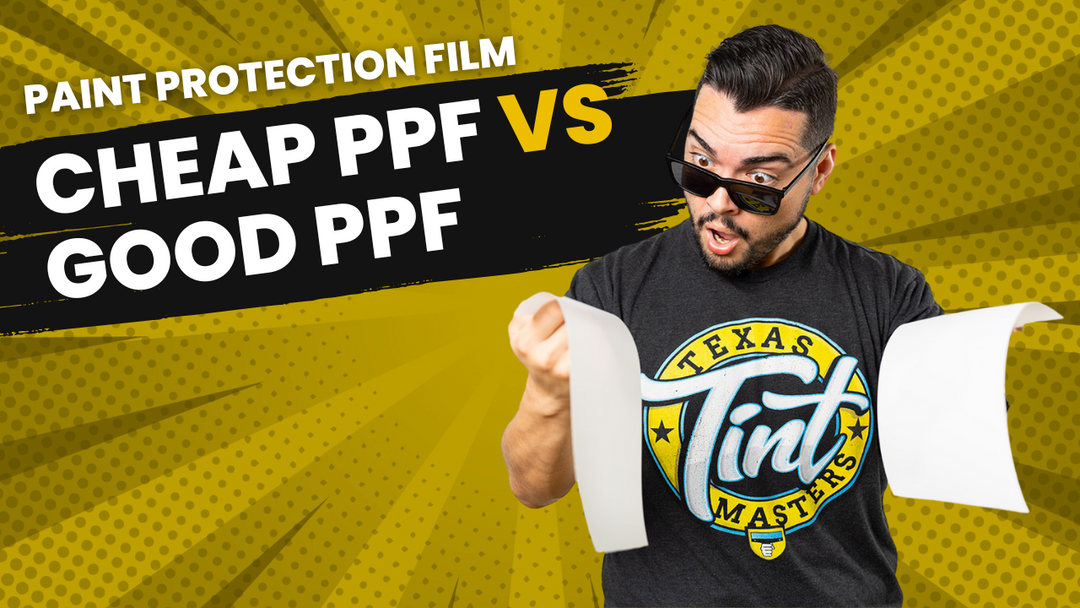Window Blinds vs Window Tint: Pros and Cons
Let's get right into it! Windows are great. They provide a lot of natural sunlight and are a great way to enjoy the outdoor views. However, they also come with their own unique set of challenges that can range from excessive heat, invading privacy, solar UV exposure that contribute to fading floors and furniture. In this page we will discuss the differences between both products to help you make an informed decision!

Many home owners and property managers find different measures of addressing challenges with windows but an all too common question is: What's Better: Window films or window blinds?
Window blinds and window films serve different purposes and offer unique benefits and drawbacks. In this page, we will review this question in depth and explore multiple scenarios. Let's start with the purposes of what each product does and what they are used for.
What do Window Blinds do?
Window blinds are offered in many types. These include, venetian, vertical, roller, roman, pleated, and many more. They are made in a wide variety of materials such as wood, metal, fabric, and plastic. Below is a great video that reviews the different types of blinds and shades with their differences and advantages:
What are the benefits of window blinds?
- Light Control: Adjustable slats allow for precise control of light and privacy.
- Aesthetic Appeal: Wide variety of styles, colors, and designs to match home decor.
- Insulation: Can provide some degree of solar insulation.
- Privacy: Offers a high level of privacy when closed by obstructing the view from inside and outside.
Maintenance will require regular dusting and occasional deep cleaning. Blind and shades are notorious for collecting dust that harbors allergens like pollen, pet dander, and dust mites, which can exacerbate allergies and respiratory issues, especially in sensitive individuals. For best cleaning practices, read more on How To Clean Blinds.
How Long Do Blinds Last?
The lifespan of blinds can vary significantly depending on the material, quality, usage, and maintenance. On average:
- Wooden Blinds: Typically last 7-10 years if properly maintained.
- Aluminum Blinds: Can last up to 10 years with proper care.
- Vinyl and Faux Wood Blinds: Generally last around 5-10 years.
- Fabric Blinds (e.g., Roman or Roller Blinds): Usually last 5-8 years, depending on fabric quality and exposure to sunlight.
Regular cleaning and maintenance can extend the life of your blinds. For instance, avoiding excessive moisture on wooden blinds and keeping fabric blinds dust-free can help prevent damage and wear. Now let's dive into architectural window films.
What Does Window Films Do?
Window films are offered in different types of material to offer multiple solutions such as solar control, decorative, security, privacy, anti-graffiti, and safety shatter-resistant window films.
What are the benefits of home window films?:

- Heat Rejection: Window Film rejects a significant amount of solar heat and energy reducing cooling costs and strain on air conditioning components.
- UV Protection: Window Films block 99% of harmful UV rays, protecting furniture and flooring from substantial fading.
- Glare Reduction: Window Films can reduce glare from sunlight, improving comfort and visibility.
- Privacy: Window films can offer one-way privacy without obstructing the view of the window (e.g., ceramic, neutral, and reflective films). Other window films offer day and night privacy.
- Safety & Security: Security window films hold shattered glass together in case of breakage, enhancing the strength and safety of the glass. Natural glass shatters into pieces and creates an open space in the window.
Maintenance is easy. Clean windows as normal using a non-abrasive cloth and vinegar based glass cleaners. Ammonia based products should be avoided at all times on window films. Ammonia products gradually degrade the anti-scratch coating in window films and result in flaking layers and eventually window film failure.
Window Blinds vs Window Films Comparison
Let's explore the differences with the specific common solutions people seek with these products.
Glare & Light Control: Blinds offer flexible light control compared to window films, which provide consistent light control. The advantage is the convenience to simply close your blinds or shades any time you want, as many times as you want. However, this is achieved by "blocking" the view which eliminates the clarity and purpose of the window.
Additionally, blinds have slats that can act as a form of redirecting light by altering the direction of which the light reflects off of the slats and into the room or space.
Window Films offer the benefit of consistent light control and preserve the view of the window. Window Films are offered in multiple shades and colors to meet the different requirements of the users.
In the case of light control in window blinds vs window films, the question you have to answer is — would you like to see out of your window?
Energy Efficiency (Heat Rejection): Untreated windows can largely contribute to increasing temperatures in a room because of the solar energy passing through the glass. Window films are generally more effective in reducing solar heat gain and improving energy efficiency. This is largely due to the fact that window films proactively address heat AT the glass and blinds create a hot pockets of air that eventually contribute to increasing room temperatures.

The biggest difference in regards to reducing heat is "pro-active vs reactive". Window Films offer a proactive solution by eliminating a large portion of heat at window. Blinds and shades offer some insulation after the solar energy has been transmitted into the space and environment.
Aesthetics: Blinds offer a broader range of aesthetic options and can be a focal point in room decor, while films are often more subtle and functional. Where window films shine their advantage is the available film types that can color or manipulate light.
Privacy: Both window blinds and window films can provide privacy.


Day Time Privacy: The differences for privacy function is the ability of blinds to offer adjustable privacy at the expense of obstructing the view. Window films preserve the clarity of a window while achieving privacy by using the glass' natural gloss surface to reflect natural light.
Night Time Privacy: Certain blinds, shades, curtains, can provide full night time privacy since they obstruct (block) the view for interior and exterior views. Solar Window Films require an external light source that is brighter than the interior to achieve night time privacy. Decorative window films such as frost window films, blackout window films, and printed window films can provide night time privacy the same way blinds do — by obstructing the view. However, unlike blinds, window films do not offer the convenience of adjustable privacy.
Durability: High-quality window films can last many years without fading, while blinds may require replacement or repair over time due to wear and tear.
Maintenance: Films are easier to maintain and clean. Just clean it like a normal window without using any ammonia products! Blinds may need more regular and thorough cleaning such as vacuuming, dusting, wiping, etc.
Choosing between window blinds and window films depends on your specific needs, preferences, and budget. For comprehensive solar control and energy savings, window films are often the better choice. For adjustable light control and aesthetic variety, window blinds might be preferable. Now let's review this in a real world scenario using one of our residential home projects we completed in Houston, TX at Texas Tint Masters.
Home Window Tint or Window Shades: That Is The Question
We recently had the pleasure of working on a project for a homeowner who's goal was to achieve heat rejection and privacy in the living and dining areas, and to ensure privacy in the front office that faces the front of the home.
Home Owner Preferences and Choices
The home owner had specific preferences for the type of window film to be used. For the back of the home, they opted for a residential grade reflective film, while for the front, they chose a neutral window film to comply with HOA regulations. After reviewing various options, the home owner selected XPEL Blend 17 Dual Reflective Window Film and Dark Neutral 15 window films.
We also conducted a heat test and included pictures in the proposal to demonstrate the effectiveness of the films.
Installation of Residential Window Films
The project was executed with great attention to detail. Here’s a breakdown of the steps involved:
- Preparation: The team prepared the area by moving necessary furniture and ensuring a clean workspace.
- Installation: I personally double-checked each install, using a bounty napkin along the edges and an air blower to remove any excess water.
- Final Check: After installation, I cleaned each frame thoroughly and inspected the work with the customer, both inside and outside the house.
Team and Results
Our team consisted of Pete, who handled the rear half of the house, and Aiden, who took care of the front half. Both did an excellent job, and the customer was extremely pleased with the results.
The final outcome was a project that not only met but exceeded the customer’s expectations. The shades and cuts were perfect, providing the desired heat rejection and privacy without compromising on aesthetics. This project was a testament to our commitment to quality and customer satisfaction.
Conclusion
Working with such nice people made the project even more enjoyable. We’re thrilled with the success of this installation and look forward to more projects that transform homes with functional and stylish solutions=









Leave a comment